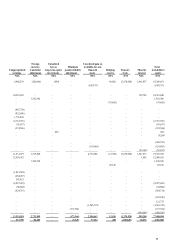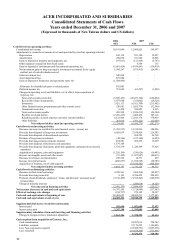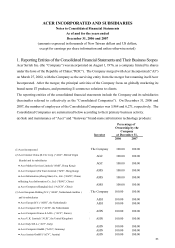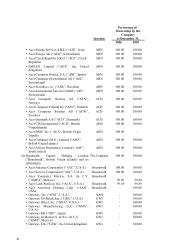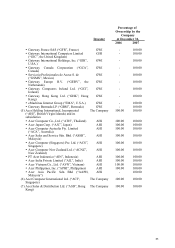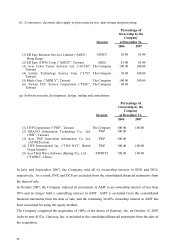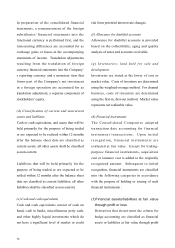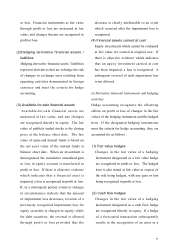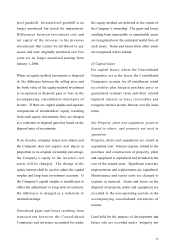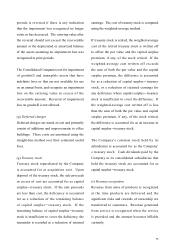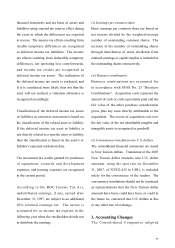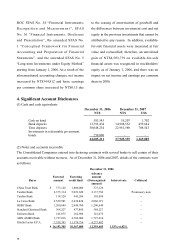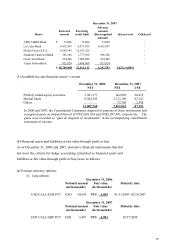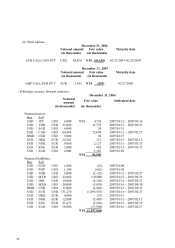Acer 2007 Annual Report Download - page 73
Download and view the complete annual report
Please find page 73 of the 2007 Acer annual report below. You can navigate through the pages in the report by either clicking on the pages listed below, or by using the keyword search tool below to find specific information within the annual report.70
In preparation of the consolidated financial
statements, a remeasurement of the foreign
subsidiaries’ financial statements into the
functional currency is performed first, and the
remeasuring differences are accounted for as
exchange gains or losses in the accompanying
statements of income. Translation adjustments
resulting from the translation of foreign
currency nancial statements into the Company’
s reporting currency and a monetary item that
forms part of the Company’s net investment
in a foreign operation are accounted for as
translation adjustment, a separate component of
stockholders’ equity.
(d) Classification of current and noncurrent
assets and liabilities
Cash or cash equivalents, and assets that will be
held primarily for the purpose of being traded
or are expected to be realized within 12 months
after the balance sheet date are classified as
current assets; all other assets shall be classied
as non-current.
Liabilities that will be held primarily for the
purpose of being traded or are expected to be
settled within 12 months after the balance sheet
date are classied as current liabilities; all other
liabilities shall be classied as non-current.
(e) Cash and cash equivalents
Cash and cash equivalents consist of cash on
hand, cash in banks, miscellaneous petty cash,
and other highly liquid investments which do
not have a significant level of market or credit
risk from potential interest rate changes.
(f) Allowance for doubtful accounts
Allowance for doubtful accounts is provided
based on the collectibility, aging and quality
analysis of notes and accounts receivable.
(g ) I nventories; land held f or sale and
development
Inventories are stated at the lower of cost or
market value. Costs of inventory are determined
using the weighted-average method. For channel
business, costs of inventory are determined
using the rst-in, rst-out method. Market value
represents net realizable value.
(h) Financial instruments
Th e Co nsoli da te d Com pa ni es a do pt ed
transaction date accounting for financial
ins tr um ent tr an sact ions. U pon in itial
recogni tio n, f ina ncia l instr umen ts ar e
evaluated at fair value. Except for trading-
purpose financial instruments, acquisition
cost or issuance cost is added to the originally
recognized amount. Subsequent to initial
recognition, financial instruments are classified
into the following categories in accordance
with the purpose of holding or issuing of such
nancial instruments :
(1)Financial assets/liabilities at fair value
through prot or loss
Derivatives that do not meet the criteria for
hedge accounting are classified as financial
assets or liabilities at fair value through prot



